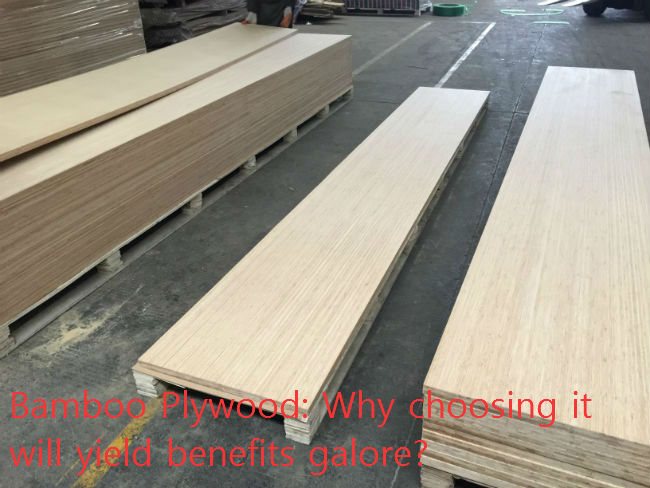Bamboo Plywood: Why choosing it will yield benefits galore?
Beautifying homes is a passion for most people. The trend is currently drifting towards the usage of eco-friendly and sustainable products. No wonder, bamboo seems to be the most preferred choice for obvious reasons. So, if you are keen to invest your hard-earned money in a fruitful way for home decor, ensure that only high quality bamboo plywood and other materials are used for customers.
Whether you are a homeowner looking for high quality materials as an alternative to natural wood or a manufacturer who likes to stock only the best products, bamboo is a versatile material to be considered. In fact, you should do a little bit of research beforehand or read reviews from satisfied customers to gauge if it’s worthy for you.
What is bamboo plywood?
Specially made from the plant of bamboo, this plywood material is a great replacement to those who wish to go ahead of lumber.
How is it made?
The process of making bamboo plywood is a rather interesting one. Using the thin strips of bamboo, they are lined together parallely and heat is applied to press it all together. Generally, three or more layers are chosen to ensure stability.
You will find bamboo plywood in different grades that are determined the time when bamboo gets harvested, the age of it and the rainfall received over a certain period of time, among the many environmental factors that account for its hardness. For those who wish to make it all by themselves, purchasing the unfinished ones is helpful or better still, get the ones in a plethora of finishes to ease the work process. A great thing about the plywood is its ability in taking stains.
Why bamboo?
Not this is one question that many have pondered over. But for those who know are quite well aware about the extreme strength that is characteristic of palnt. Most likely comparisons are steel in grounds of tension and concrete for compression. Given its lightweight nature, bamboo is far better and easy to work with compared to wood, steel or concrete. So, it has a ‘great ration of strength to weight’.
Besides, bamboo is a fast growing plant, where it expands to no less than 250 centimetres to 1 metre in length in 24 hours only. This depends on the climatic conditions, soil quality and most importantly the species. Wood or timber on the other hand has much slower growth on the same area of land. This abundant supply of bamboo makes it a hot choice for many who know they can avail larger production. However, few take a longer time to mature and it would be unwise to cut them for meeting the growing demands, as it will yield in low grade plywood material. So, the safest bet would be the ‘Moso Bamboo’ species.
Not to leave out the host of environmental benefits that the plant brings about- its ability to grow and spread faster on a certain space, without the application of fertilizers, pesticides and too much water. Added to that is the affordable rate, which causes many to opt for it.
What are the basic types?
Bamboo plywood can be availed in a number of styles, but most of them use a combination of three main factors:
Firstly, the grain size or appearance of the surface matters. Vertical and horizontal ones are employed in modern designs but strand woven being a tad pricey can be sued for both traditional and some current designs.
Secondly, bamboo plywood is found in a lot of colours and one can also get custom-stained ones. Usually, natural (blonde), carbonized (honey or brown) and tiger (zebra or marbled), which combines both natural and carbonized forms are in use.
Thirdly, the plywood sheets can be as thin as ¼” to almost 1 or ½” in terms of thickness. Depending on the purpose, the sheets are chosen.
What about its sustainability?
Perhaps, this is one of the prime factors that have led to the increasing demands of bamboo plywood. The fact that only 205 of the bamboo forests are cut, leaving aside 80% of it stands testimony to the wonderful sustainability it’s known for. Surely, there will be more buyers of bamboo plywood products in the years to come.



 皖公网安备 34180202000049号
皖公网安备 34180202000049号